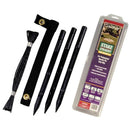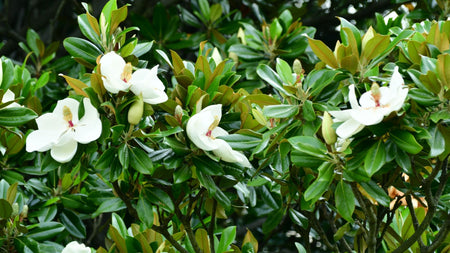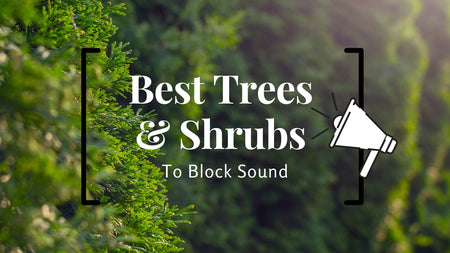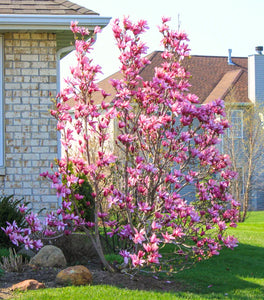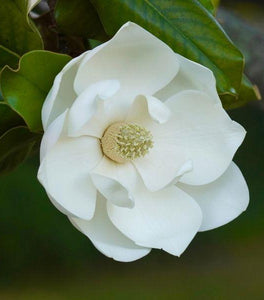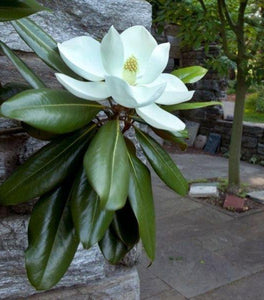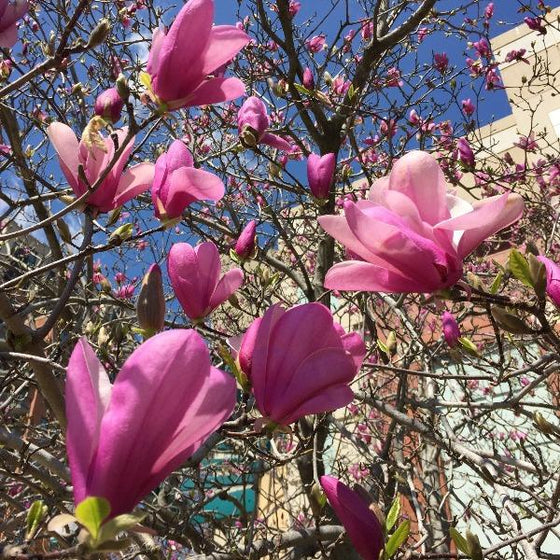
Images Depict Mature Plants
Magnolia Ann Trees for Sale Online
Magnolia 'Ann' is a beautiful deciduous shrub or small tree that brings a dramatic splash of color to spring gardens with its striking deep pink to reddish-purple blossoms. Part of the Little Girl series of hybrid magnolias, 'Ann' Magnolia produces large, tulip-shaped flowers that bloom in early to mid-spring, often before the tree fully leafs out, creating a stunning display of vibrant blooms against bare branches. The lightly fragrant blossoms are not only visually captivating but also provide a delightful scent to welcome the spring season. Magnolia 'Ann' thrives in USDA Hardiness Zones 4-9, making it adaptable to a wide range of climates, from colder northern regions to more temperate areas.
Reaching a mature height of 10 to 15 feet with a similar spread, Magnolia 'Ann' is the perfect choice for smaller yards, urban gardens, or as a focal point in larger landscapes. Its compact, rounded growth habit makes it suitable as a specimen tree, a flowering hedge, or a stunning addition to a mixed shrub border. The dark green foliage of Magnolia 'Ann' emerges shortly after the flowers fade and remains lush throughout the growing season, providing a rich backdrop for other garden plants. In autumn, the leaves turn a warm golden yellow, adding another layer of seasonal interest before the tree enters its winter dormancy.
Magnolia 'Ann' is a low-maintenance and hardy plant that grows best in well-drained, slightly acidic soil, and it prefers full sun to partial shade for optimal flowering. A layer of organic mulch around the base helps retain moisture and keep the roots cool during hot summer months. Once established, this magnolia is relatively drought-tolerant and requires little care beyond occasional pruning to remove dead or damaged wood and maintain its attractive shape. With its vibrant spring blooms, lush summer foliage, and elegant structure, Magnolia 'Ann' is a wonderful addition to any garden, offering year-round beauty and an impressive floral display each spring.
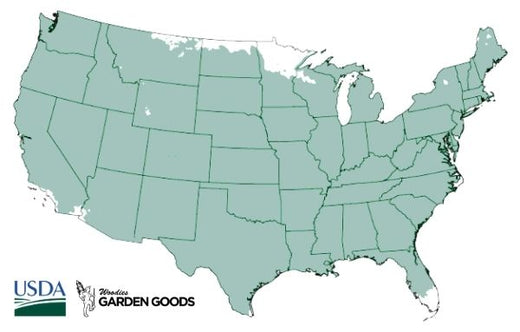
| Hardiness Zone: | 4-9 |
|---|---|
| Mature Height: | 10 to 15 Feet |
| Mature Width: | 8 to 10 Feet |
| Classification: | Flowering tree |
| Sunlight: | Full sun to partial shade |
| Habit: | Upright |
| Foliage: | Green |
| Flower Color: | Purplish-pink |
| Soil Condition: | Any well drained soil |
| Water Requirements: | Water well until established |
How to Care for Magnolia Ann
Be sure to read our planting instructions to ensure a healthy and happy Magnolia Ann for years to come!
How do I plant a Magnolia Ann Tree?
To plant a Magnolia 'Ann' tree, start by selecting a location that offers full sun to partial shade, as this will ensure the best flowering display and overall growth. Magnolia 'Ann' prefers well-drained, slightly acidic soil rich in organic matter, which helps promote healthy root development and abundant blooming. Begin by digging a hole that is twice as wide and just as deep as the tree's root ball to give the roots space to spread. Place the Magnolia 'Ann' tree in the hole, ensuring the top of the root ball is level with the surrounding soil surface. Fill the hole back in with the excavated soil, gently firming it down to eliminate air pockets, and water thoroughly to help settle the roots. Spacing multiple magnolia trees about 10-15 feet apart will allow for proper airflow and provide enough room for the tree's mature size. After planting, it's crucial to provide consistent moisture, especially during the first growing season, to help establish a strong root system. Water deeply once or twice a week, depending on weather conditions, to keep the soil consistently moist but not waterlogged. Adding a 2-3 inch layer of organic mulch around the base of the tree helps retain soil moisture, regulate temperature, and reduce weeds. Ensure the mulch is kept a few inches away from the trunk to prevent rot. Magnolia 'Ann' is relatively easy to care for once established, requiring minimal maintenance beyond occasional pruning to remove any dead or damaged branches. By following these planting steps, your Magnolia 'Ann' will grow into a stunning landscape feature, providing vibrant pink blooms in spring and lush foliage throughout the summer and fall.
How do I water A Magnolia Ann?
Watering a Magnolia 'Ann' correctly is key to ensuring its healthy growth and abundant spring blooms. During the first growing season, it is crucial to keep the soil consistently moist to help establish a strong root system. Water deeply once or twice a week, depending on rainfall and soil type, making sure to soak the soil down to the root level. Deep watering encourages the roots to grow further into the soil, making the tree more resilient to dry conditions in the future. Be sure to water at the base of the tree rather than over the foliage, as this helps prevent fungal diseases and ensures that the moisture reaches the roots where it is needed most. For the best results, water in the early morning or late evening to minimize evaporation. Once established, Magnolia 'Ann' is moderately drought-tolerant but will perform best if the soil remains consistently moist, particularly during the hot summer months. A layer of organic mulch around the base of the tree can help retain soil moisture and regulate soil temperature, reducing the need for frequent watering. Mulch also helps prevent weeds from competing with the magnolia for nutrients and water. While Magnolia 'Ann' appreciates moist soil, avoid overwatering, as waterlogged conditions can lead to root rot. Monitor the soil moisture regularly, and water when the top few inches of soil feel dry to the touch. By providing Magnolia 'Ann' with the right amount of water, you will encourage healthy growth, lush green foliage, and a stunning display of deep pink blooms each spring.
How do I fertilize A Magnolia Ann?
Fertilizing a Magnolia 'Ann' is important to support its healthy growth, encourage abundant blooming, and maintain vibrant green foliage. Begin by incorporating organic matter like compost into the soil at the time of planting, as this provides a nutrient-rich base for the tree. In early spring, before new growth begins, apply a slow-release, balanced fertilizer, such as a 10-10-10 or 12-4-8 formulation, around the base of the tree. Spread the fertilizer evenly in a circle starting a few inches from the trunk and extending to the tree’s drip line. Water thoroughly after applying fertilizer to help nutrients reach the root zone and support early-season growth. A well-balanced fertilizer helps promote larger, more vibrant blooms and maintains the overall health of the Magnolia 'Ann.' In addition to the early spring feeding, a light application of fertilizer can be made in late summer if the tree’s growth appears slow or the leaves show signs of nutrient deficiency. Avoid using high-nitrogen fertilizers, as these can encourage excessive foliage growth at the expense of flowering. Organic options, such as compost tea or well-rotted manure, can also be used to provide a gentle, nutrient boost without the risk of over-fertilizing. Adding a layer of organic mulch, such as pine needles or bark, around the base of the tree helps improve soil structure, provide a slow-release source of nutrients, and retain moisture. By maintaining a proper fertilization routine, you will ensure that your Magnolia 'Ann' stays healthy, produces stunning spring blooms, and adds beauty to your garden throughout the growing season.

How do I Prune A Magnolia Ann?
Pruning a Magnolia 'Ann' is essential for maintaining its shape, promoting healthy growth, and ensuring abundant flowering each spring. The best time to prune your Magnolia 'Ann' is immediately after the flowering period, usually in late spring, to avoid removing buds that will form next year's blooms. Begin by removing any dead, damaged, or diseased branches to improve the overall health of the tree and prevent the spread of potential pests or diseases. Use clean, sharp pruning shears to make clean cuts just above a branch collar, ensuring that the cuts are not flush against the trunk to allow for proper healing. Additionally, thin out any crossing branches to enhance airflow and reduce overcrowding, which helps to prevent fungal issues and promotes better growth. Light shaping and maintenance pruning can also be done during this period to maintain the tree's naturally rounded form. Be careful not to over-prune, as excessive cutting may reduce the number of flowers produced the following season. Magnolia 'Ann' benefits from minimal pruning, focusing on keeping the structure open and removing any branches that detract from the tree's overall aesthetic. If you need to control the size of the tree, limit pruning to a few select branches each year rather than cutting back all at once, as magnolias do not respond well to heavy pruning. By pruning correctly, your Magnolia 'Ann' will continue to provide stunning deep pink blooms in spring and maintain its beautiful, structured growth throughout the year, enhancing the elegance of your garden.








